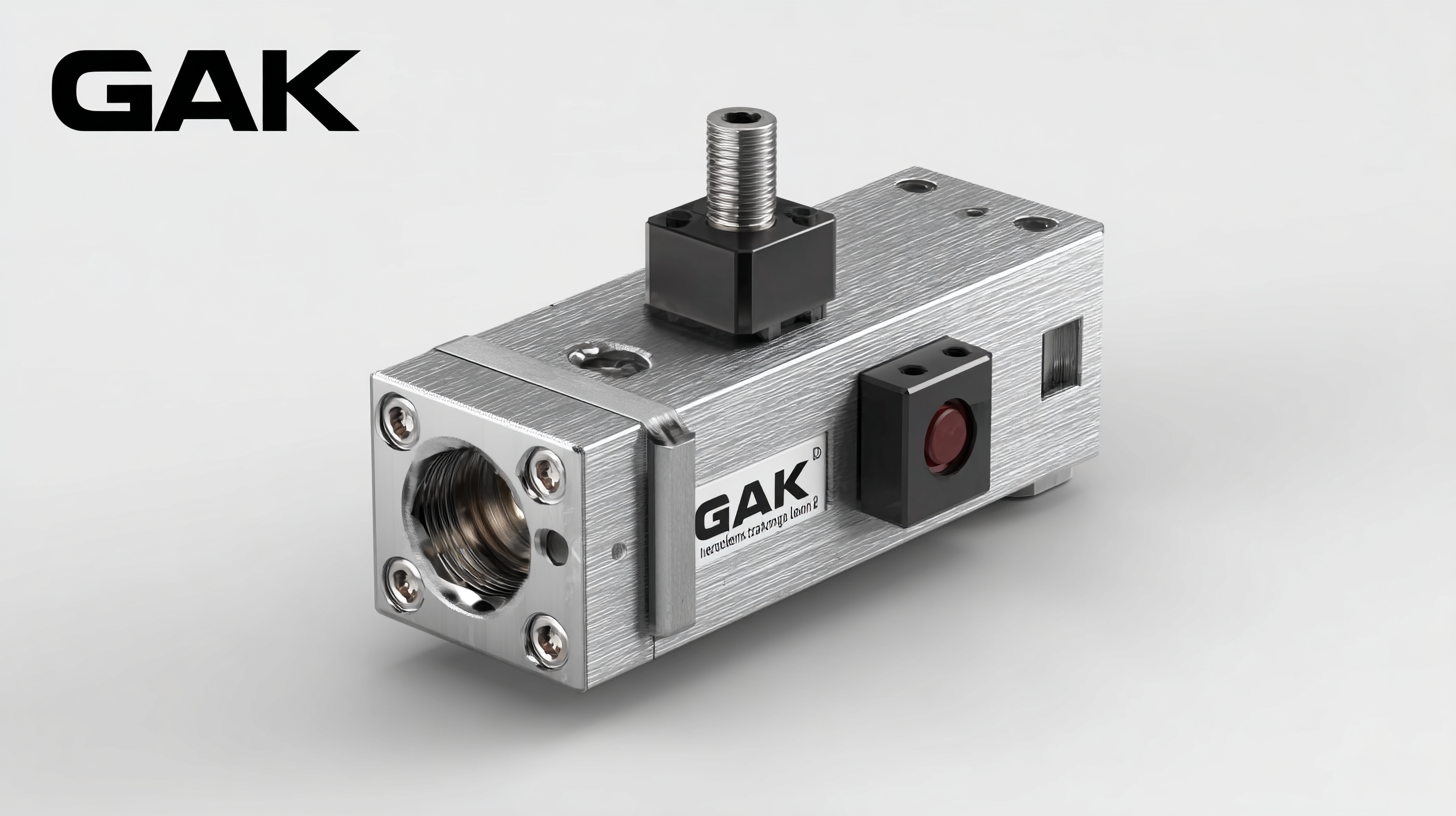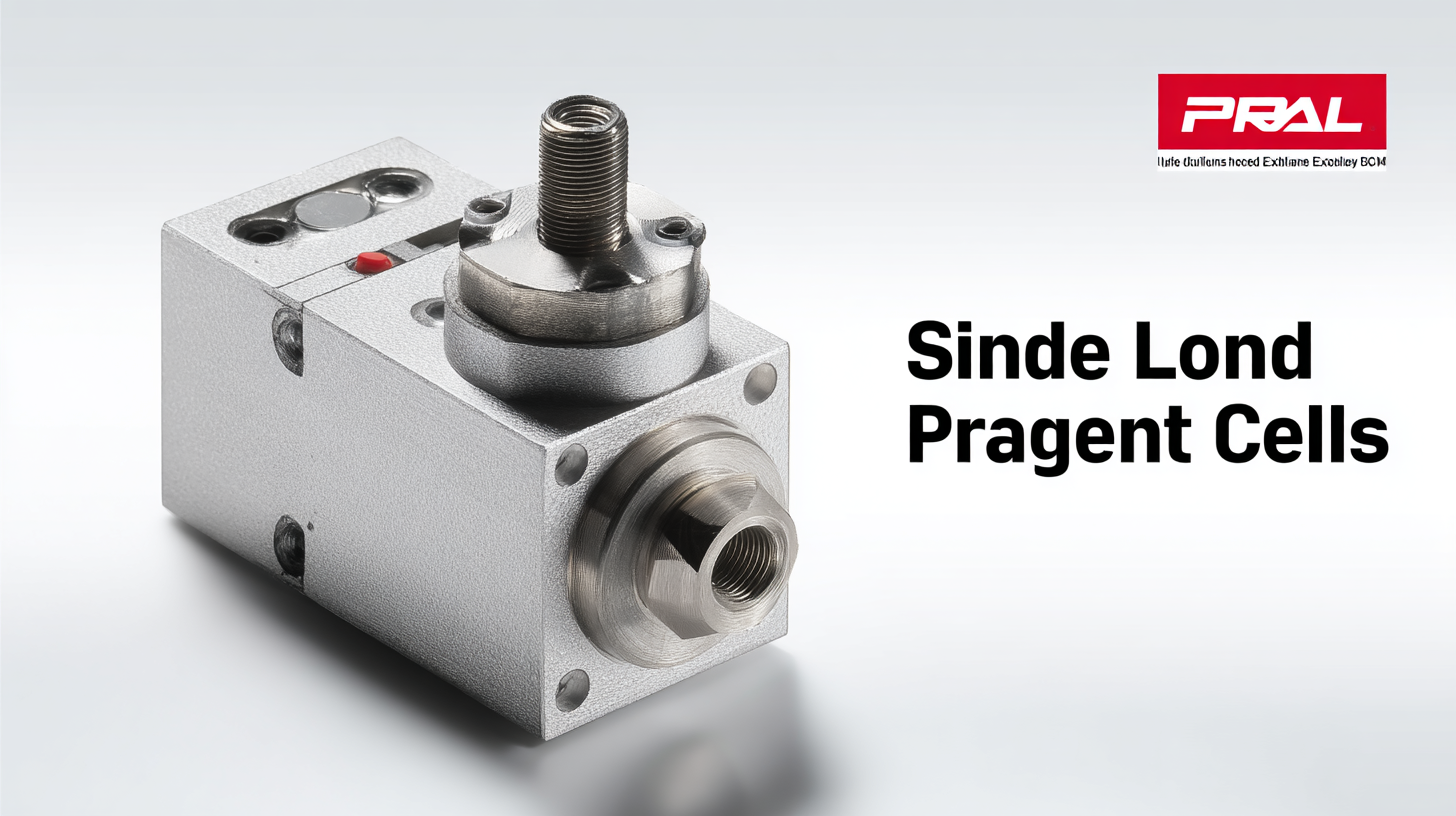 sales@loadcellsensor.com
sales@loadcellsensor.com

Ensuring Excellence: Global Industry Standards for the Best Single Point Load Cells
As we enter 2025, the evolution of technology continues to reshape various industries, with precision measurement playing a crucial role in ensuring performance and accuracy. Single Point Load Cells, renowned for their reliability and versatility, have emerged as essential components in countless applications, from industrial scales to medical devices. This blog explores the latest trends in technology that are influencing the development and standardization of Single Point Load Cells, highlighting the global industry standards that ensure excellence.

By examining the advancements in sensor technology, materials science, and data integration techniques, we provide a comprehensive guide on how companies can adapt to these innovations. Join us as we delve into the future of Single Point Load Cells, discussing their significance in enhancing operational efficiency and maintaining quality across various sectors.
The Rise of Chinese Manufacturing in Load Cell Technology
Chinese manufacturing has made significant strides in the realm of load cell technology, positioning itself as a key player in the global market. With advancements in engineering and production capabilities, Chinese manufacturers are not only matching but often surpassing the quality of their Western counterparts. This growth can be attributed to a combination of heavy investment in research and development, as well as the ability to scale production efficiently. As a result, load cells produced in China are now known for their reliability and accuracy, making them a favorable choice for various industries seeking cost-effective solutions without compromising quality.
The rise of Chinese load cell manufacturers underscores a broader trend of globalization in engineering standards. As businesses search for high-performance load cells that comply with international standards, China has emerged as a hub for innovation and quality assurance. Many factories adhere to stringent quality guidelines such as ISO and OIML, ensuring that each product not only meets but often exceeds the necessary safety and performance benchmarks. This commitment to excellence positions Chinese load cell technology as a formidable option for industries worldwide, changing the landscape of measurement and weighing solutions on a global scale.

Key Global Industry Standards for Load Cell Quality Assurance
In the field of weighing technology, ensuring the highest quality and performance of single point load cells is paramount. Various global industry standards outline the necessary guidelines for quality assurance, providing manufacturers and users with critical benchmarks to follow. Among these standards, ISO 9001 plays a significant role by establishing quality management principles that drive consistency in production processes, ultimately ensuring reliability and accuracy in load cell performance.
Another crucial standard is OIML R60, which specifically pertains to load cells. This recommendation addresses everything from design and manufacturing to testing and installation, ensuring that load cells meet the rigorous demands of accuracy and durability. Compliance with OIML R60 not only enhances the credibility of manufacturers but also assures end-users of the safety and precision essential for their applications. By adhering to these global standards, companies can confidently deliver load cells that meet industry expectations and customer satisfaction, upholding the principle of excellence in every product.
Ensuring Excellence: Global Industry Standards for Load Cells
This chart illustrates the compliance levels of different load cell manufacturers with various global industry standards, showcasing the importance of quality assurance in ensuring excellence in load cell performance.
Innovative Features of the Best Single Point Load Cells
In the competitive realm of precision measurement, the best single point load cells stand out due to their innovative features and adherence to global industry standards. These load cells, utilized across various sectors from manufacturing to aerospace, offer high accuracy and reliability, which are crucial for ensuring operational excellence.
According to a recent market report, the global load cell market is projected to reach a value of $2.1 billion by 2025, with single point load cells expected to hold a significant share due to their versatility and compact design.
Innovative features such as advanced signal processing, built-in temperature compensation, and enhanced environmental resistance are redefining the capabilities of modern single point load cells. For instance, the integration of digital technologies and IoT capabilities in load cells allows for real-time monitoring and data analytics, enhancing decision-making processes in industrial applications.
Moreover, compliance with industry standards not only ensures product quality but also fosters consumer trust, which is essential in industries with stringent safety regulations. This evolution in load cell technology reflects a broader trend of innovation within the manufacturing landscape, where companies are increasingly looking to partner with tech leaders to drive digital transformation and operational efficiency.
The Importance of Precision and Reliability in Load Cell Applications
Precision and reliability are fundamental attributes in the realm of load cell applications, particularly in sectors that demand exceptional accuracy. Load cells serve as critical components in weighing and force measurement systems, and any deviation from their expected performance can have significant repercussions. For instance, in industrial manufacturing and quality control, even minor miscalculations can lead to defective products or safety issues. Thus, ensuring that load cells meet stringent global industry standards is crucial for maintaining operational excellence.
Moreover, the importance of precision extends to sectors such as aerospace, healthcare, and automotive, where safety and compliance with regulations are paramount. In these industries, load cells must provide consistent and accurate measurements under varied environmental conditions. Engineers and product developers must choose load cells that are not only reliable but also capable of sustaining their performance over time. By prioritizing precision and reliability, businesses can enhance their operational efficiency and reduce the risks associated with inaccurate measurements, ultimately leading to improved outcomes and satisfaction in their respective markets.
Ensuring Excellence: Global Industry Standards for the Best Single Point Load Cells
| Load Cell Type | Capacity (kg) | Accuracy (%) | Temperature Range (°C) | Market Applications |
|---|---|---|---|---|
| Single Point | 0 - 500 | ±0.02 | -10 to 40 | Weighing Scales, Batching Machines |
| Single Point | 0 - 1000 | ±0.01 | -20 to 50 | Industrial Automation, Food Industry |
| Single Point | 0 - 3000 | ±0.03 | -10 to 60 | Pharmaceutical, Packaging |
| Single Point | 0 - 2000 | ±0.015 | -10 to 55 | Logistics, Transportation |
| Single Point | 0 - 750 | ±0.005 | -15 to 45 | Retail Scale, Medical Applications |
Global Market Trends and the Future of Load Cell Manufacturing
The global load cell market is witnessing remarkable growth, driven by advancements in technology and increased demand across various industries. According to a recent market analysis report by Market Research Future, the load cell market is expected to reach USD 3.8 billion by 2026, growing at a compound annual growth rate (CAGR) of 5.5% from 2021. This surge can be attributed to the rising adoption of automation in manufacturing, where precision measurement is paramount for quality control and operational efficiency.

As industries continue to evolve, the future of load cell manufacturing looks promising, particularly with the integration of IoT and smart technologies. A report from ResearchAndMarkets indicates that smart load cells will constitute over 25% of the total load cell market within the next five years. These innovative solutions offer real-time data transmission and enhanced accuracy, catering to sectors such as automotive, aerospace, and medical devices. This trend not only enhances performance but also aligns with global industry standards that prioritize interoperability and efficiency, ensuring that manufacturers remain competitive in the rapidly changing market landscape.

